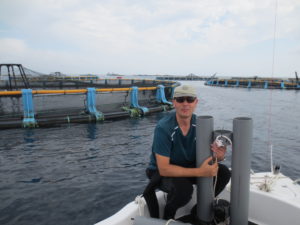Testing the effects of main antibiotics and antifouling paints used in sea bream farming

The Western Mediterranean case study of the TAPAS Project performed by University of Murcia is currently one of the most aquaculture intensive areas in Spain of gilthead sea bream and sea bass production, with an average production of around 11.000 metric tons per year. The farming is exclusively carried out in open sea cages. The farm is close to the Protected Area of Community Importance (LIC ES6200029). The principal goal of the case study is to provide data for the validation of modeling work executed in TAPAS together with the sampling campaigns include in-situ measurements of a wide variety of physical, chemical and biological parameters in the environment encircling fish farms in the Fish Farming Zone of San Pedro del Pinatar (Murcia, Spain).
The University of Murcia will conduct this case study where the main objectives are to monitor:
- physico-chemical features
- toxic substances (metals and antibiotics)
- biota abundance and taxonomy (benthic micro and macro-invertebrates)
- macrofauna and phytobenthos
- sediment chemistry and composition
Samples of fauna and flora will be collected by the research team in order to investigate the nutrients kept by the encircling ecosystems with the aim to provide data for developing better environmental impact assessment models. The isotopic compositions will show not only the dispersion of nutrients from fish farm effluent but also which organism or substrate kept most of the nutrients


